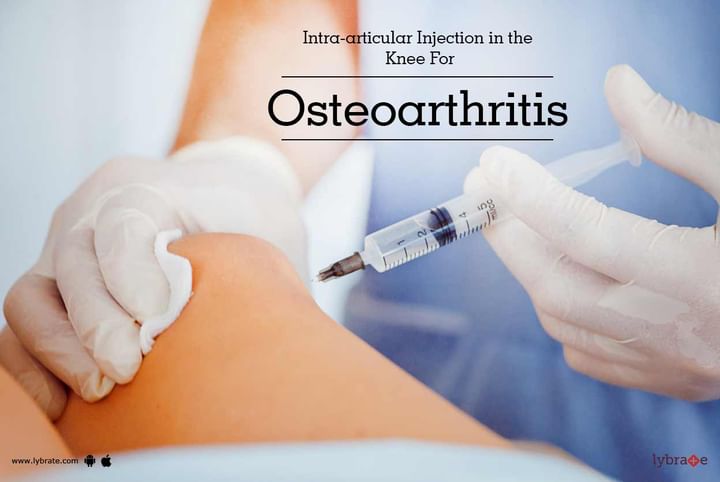Intra-Articular Injection in the Knee For Osteoarthritis
What are they?
Intra-articular injections or intra-articular corticosteroid injections are steroid medicines that are injected into the joint space directly, for curing and treating painful and inflammatory arthritic joint syndromes. In general, this procedure of treatment is adopted by orthopedic practitioners since steroidal drugs, when administered orally, are hardly of any use for osteoarthritis patients.
Steroids are natural substances which are akin to the hormones in your body. Steroids are mostly taken for reducing inflammation. Apart from inflammation in the bones, intra-articular corticosteroid injections are also administered for alleviating inflammation in the ligaments and tendons in patients suffering from osteoarthritis.
Note that intra-articular corticosteroid injections are prescribed to osteoarthritic patients only if the pain and inflammation do not subside with the use of NSAIDs and analgesics. Corticosteroid injection often provides temporary relief, when other oral medicines have failed to provide comfort to the patient.
Hyaluronic Acid Injections
Another form of intra-articular injection is the one containing intra-articular hyaluronic acid. Hyaluronic acid is a natural fluid that aids in lubricating the joints and allows them to function smoothly. It acts as a shock absorber in your body. However, with osteoarthritis, the hyaluronic acid in the affected joints wears out. Depending on the type of injection, you may get one shot of hyaluronic acid intra-articular injection, or three to five injections spaced a week apart.
The Process
The process of administering such injections needs the doctor to first clean the area. In case of swelling, local painkillers can be injected. Next, the doctor inserts a needle to withdraw the excess fluid that’s within the knee joint and then with the same needle in place, the doctor finally injects the medication into the knee joint.
The basic side-effects of intra-articular injections include mild pain at the site of the injection along with a small buildup of joint fluid. However, these side-effects are usually never a matter of concern and they get resolved on their own within a span of a few days. If you wish to discuss about any specific problem, you can consult an orthopedist.



+1.svg)
